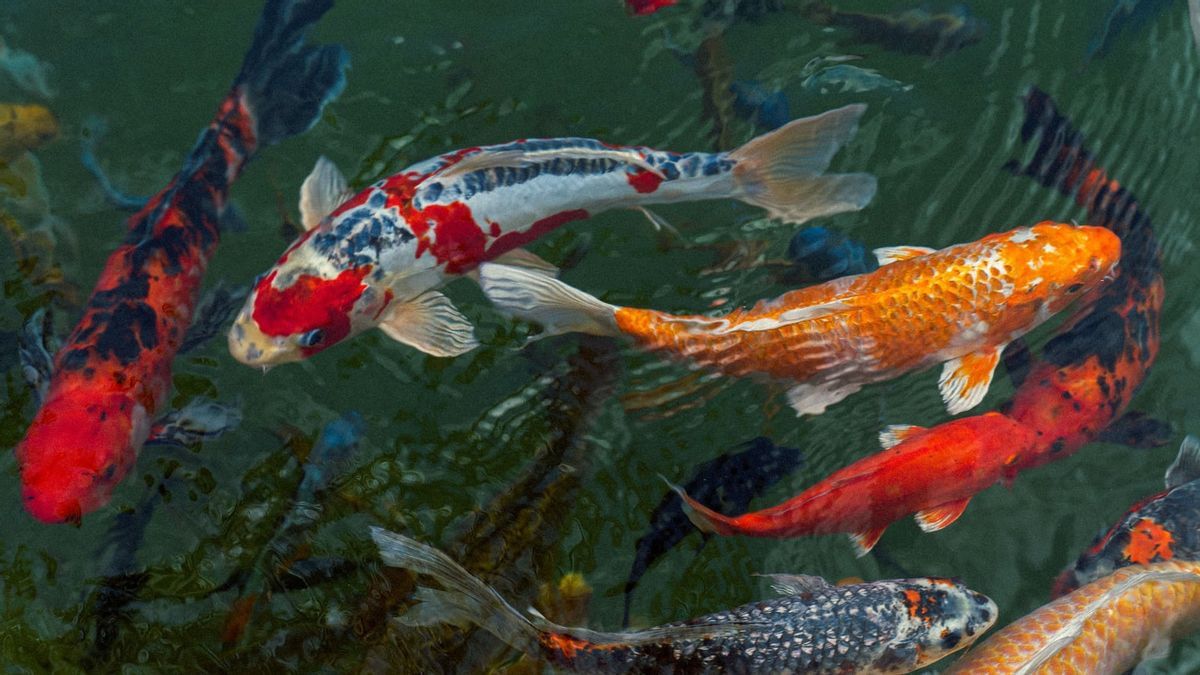YOGYAKARTA - Koi fish are one of the types of fish that are sought after to protect. Koi fish are usually used for home decoration in the pond. There are two types of koi, namely local koi and imported koi. Koi lovers must be familiar with this term. However, there are still many people who do not know it.
Local koi fish is a term for the type of koi fish cultivated by the Indonesian people. Local koi fish are actually no different from imported koi. Local koi fish are the umpteenth generation of imported koi fish imported from abroad.
Meanwhile, imported koi fish are a term for koi fish imported from abroad. Japan is a country that produces good quality koi. Koi age in Japan can even reach 200 years. That's why koi fish are one of the animals that have a long life.
Local and imported koi fish have the same good quality. The quality of koi fish is determined by the care carried out by the owner. Here are some differences in koi fish.
Local koi fish are generally sold at a cheaper price compared to imported koi fish. Local koi is priced more affordable because the production and distribution costs are less than imported koi.
One way to distinguish local and imported koi fish is in terms of color. The color of local koi fish will fade, especially in white. While the color of imported koi fish is still strong or bright. The difference in color is only seen when the fish are more than 50 cm in size.
Import koi fish have eyes that are larger than local koi. His eyes seemed to appear out of his head. The imported koi eye ball is also bigger than the local koi, so it looks attractive.
Local koi fish have a slightly patterned body shape. Her stomach also looks a little distended. Meanwhile, imported koi has an elongated body shape.
Import koi fish have mouths whose shape is pushed down. While local koi fish have a shape of the mouth that pushes a bit forward. Differences in the shape of the mouth are caused by environmental factors and the type of feed.
Local Koi has several characteristics such as, a smaller, unkempt, faster mature and lay eggs, and the color fades quickly.
The Thaiso Sanke koi fish began to be cultivated and introduced by Japan in 1912. This type of koi is easy to cultivate because the method of breeding is not difficult. Koi has three colors with two patterns.
This fish has a white base color with red and black patterns on its body and head. Koi Thaiso Sanke is priced at IDR 250.000-IDR 350.000 per head.
The Goromo koi fish is the result of a cross between koi Kohaku and koi Asagi. The characteristics of this fish are that there is a round pattern of purplish black on the top of his body.
The Goromo koi fish has 4 color variants, namely blue, purple, indigo, and black. This fish is sold at a price of Rp. 400,000 to Rp. 450.000 per head.
The popular koi gon fish called golden ogon has a golden yellow color. This fish was discovered by a farmer in 1946. Koi is the result of a ticket from a yellow back koi with a Shiro-Fuji koi. Koi Ogon fish is sold at a price of around Rp. 1.40.000-Rp. 1.600.000 per head.
Kawarimono fish is the result of a ticket or hybrid. There are 4 types of variants of the first kawarimono, namely Karasugoi, Kigoi, Chagoi, and Midorigoi. The price of this type of koi fish is priced at around Rp. 300,000-Rp. 500,000.
The Shiro Bekko koi fish has the characteristics of a milky white base color and a bluish black leopard pattern. This type of fish is quite much in demand by koi lovers because of its attractive color. This koi fish is sold at a price of around Rp. 700,000 per head.
That's the type of local koi and the difference between imported koi. Basically there is no difference between the two because they are both generations from abroad. The most important thing in the quality of the koi is its care.
Keep up with the latest domestic and other overseas news on VOI. You bring up the latest and most internationally updated.
The English, Chinese, Japanese, Arabic, and French versions are automatically generated by the AI. So there may still be inaccuracies in translating, please always see Indonesian as our main language. (system supported by DigitalSiber.id)








